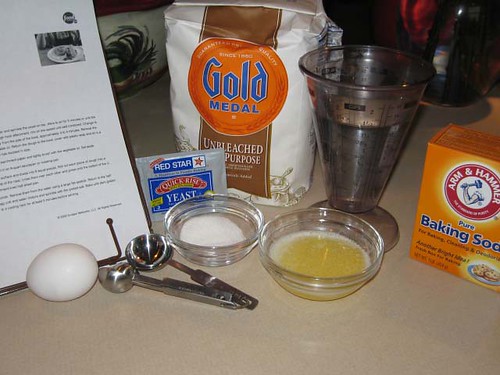French Country Bread
Tragedy struck last week - I stripped the worm gear in my mixer and while the part's on order, it's out of commission. So today I was looking for a nice, simple by-hand bread recipe. You know, because supposedly people do bread all the time without the benefit of mixers. =)
I turned to [i]Savory Baking from the Mediterranean[/i] by Anissa Helou and found a recipe for French Country Bread that had only 3 ingredients - 4 if you count water-based ingredients:
